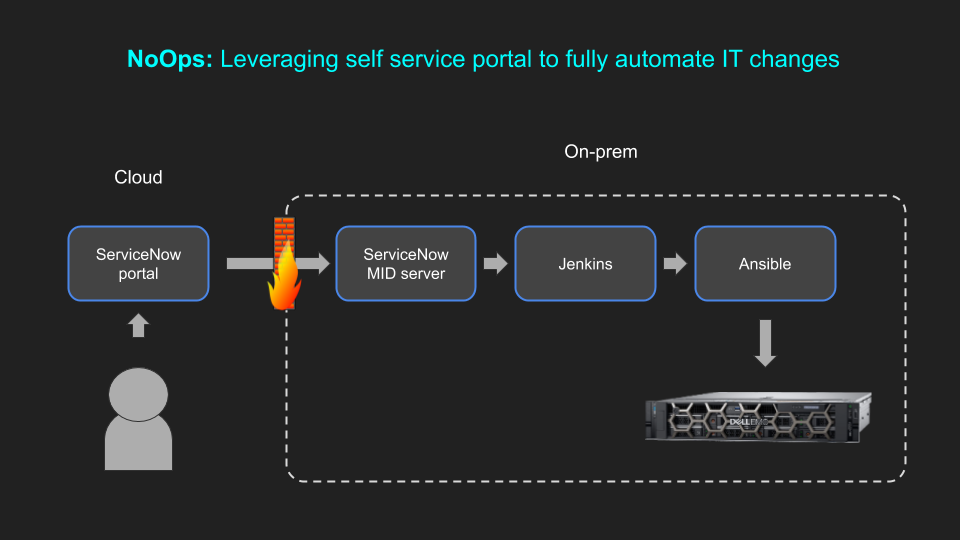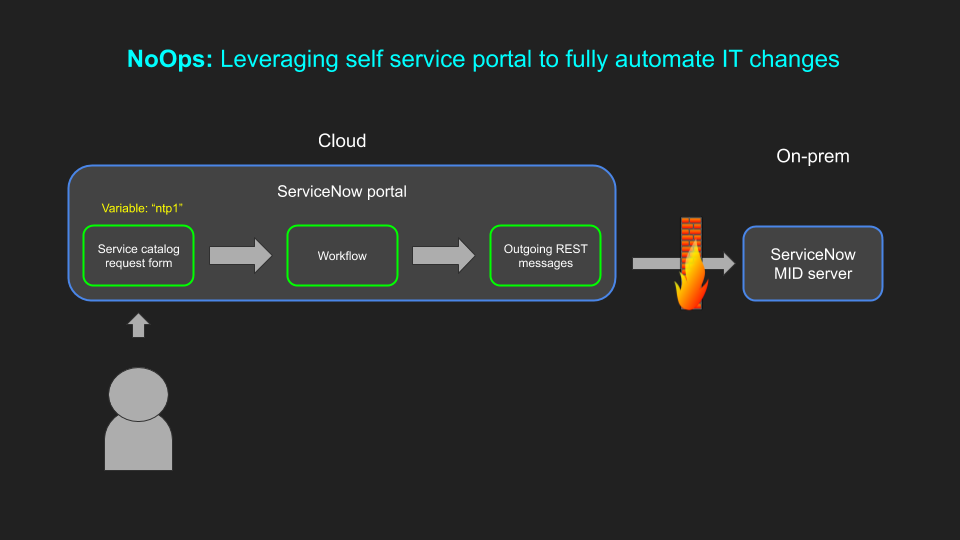Moving from IT services Hell to Nirvana
Many organizations are struggling to keep up with the evolution IT is going through. Operations teams have to cover more ground than before and have to get used to manage complex workloads across multiple clouds as well as their own data centers and edge locations.
At the same time users are getting accustomed to the high service levels offered by the hyper-scalers like AWS, Azure and GCP where any request for IT infrastructure is fulfilled in seconds or minutes. Those are high standards for the local Ops team to live up to. Furthermore, if the lack of speed in fulfilling those requests when done to internal IT hold up development teams and thereby threaten to stall the business itself we have a real problem on our hands. How can this be solved in an efficient and and economical manner?
Changing the game by automating the pipeline
Enter NoOps, or IT operations where automation fulfill the requests for IT services without the local Ops team having to get involved. This keeps the requesting user happy, the team that needs the services on schedule and the business itself on track. At the same time the Ops team can focus on more urgent tasks, like how to leverage IT to empower the business without having to struggle with keeping up with service requests from users.
These IT changes can be anything from bare metal server changes to entire clusters including server, network, storage and virtualization or container orchestration layers.
Scope
In this example we showcase how the tools listed below can be linked together to work as a user-initiated pipeline to change to a hardware setting. In this case we update a server NTP value, but anything is possible – including complex IT stacks
- ServiceNow: User portal, approval flow, chargeback
- ServiceNow MID Server: On-prem SNOW instance to traverse firewalls
- Jenkins: Manages the CI/CD pipelines, the integration and orchestration of other tools, like Ansible
- Ansible: Does the actual legwork in the execution of playbooks for set tasks. It accepts variables from the user passed in via Jenkins from ServiceNow
- Dell EMC PowerEdge server: Used as the target of the automation framework in this use case
Architecture
Overall architecture from user to device

The moving parts of ServiceNow

What is out of scope and complementary guides
The guide doesn’t go through the setup of the individual solutions but the steps are described in great detail below:
- ServiceNow dev account: https://developer.servicenow.com/dev.do
- ServiceNow MID Server: link
- Jenkins install on Ubuntu 19.10: link
- Ansible install + plugins for PowerEdge: link
ServiceNow Workflow script
ServiceNow Workflow script to capture the variable entered by the user:
var ntp1 = workflow.inputs.ntp1;

